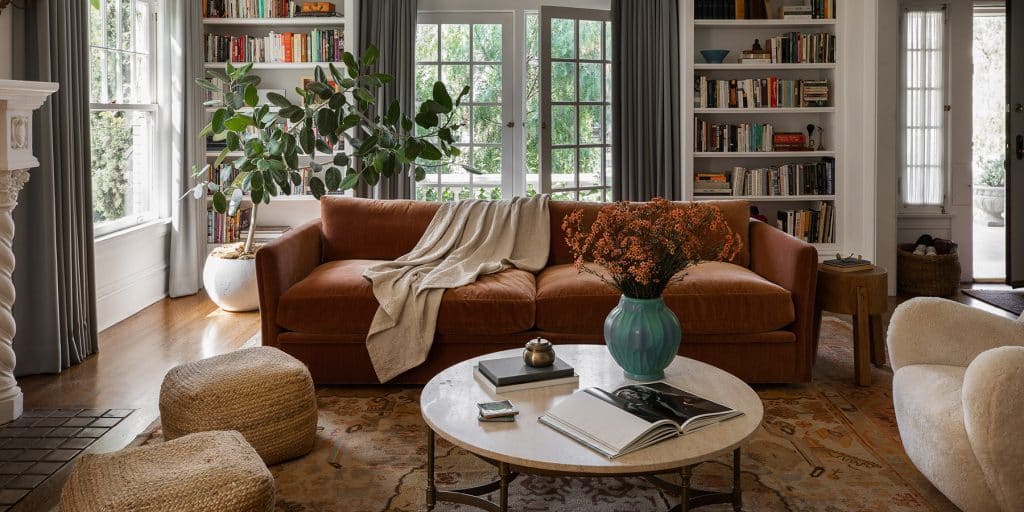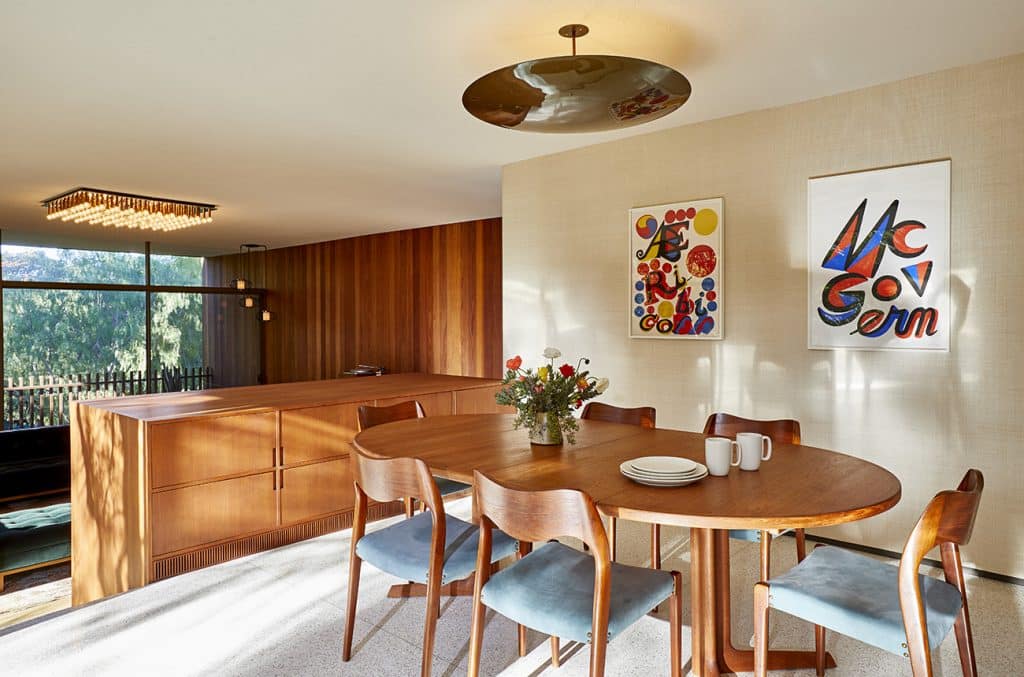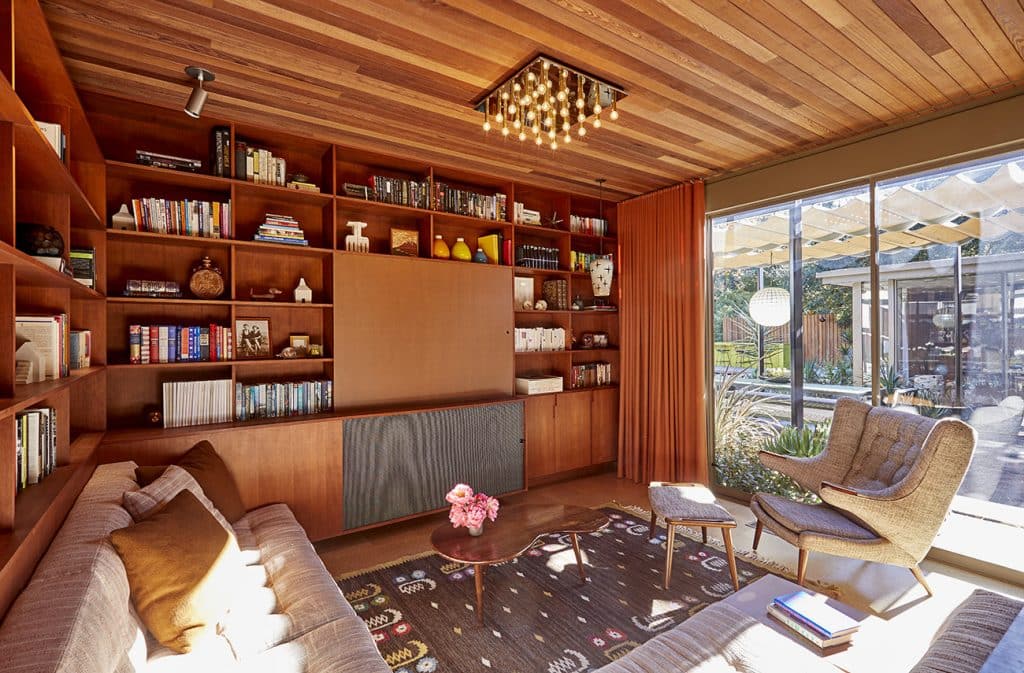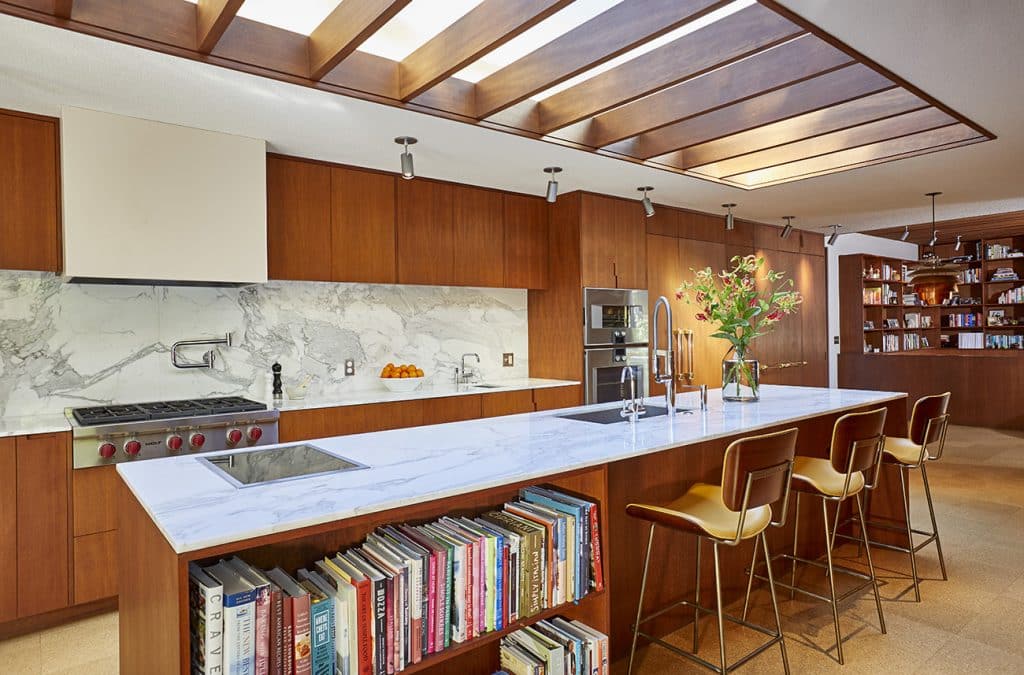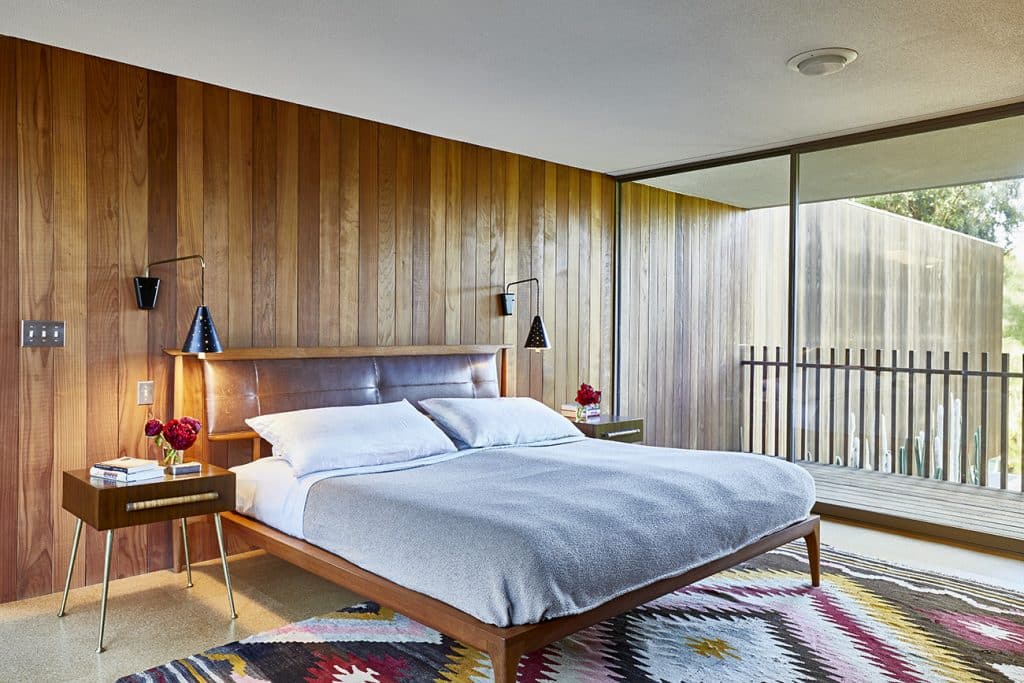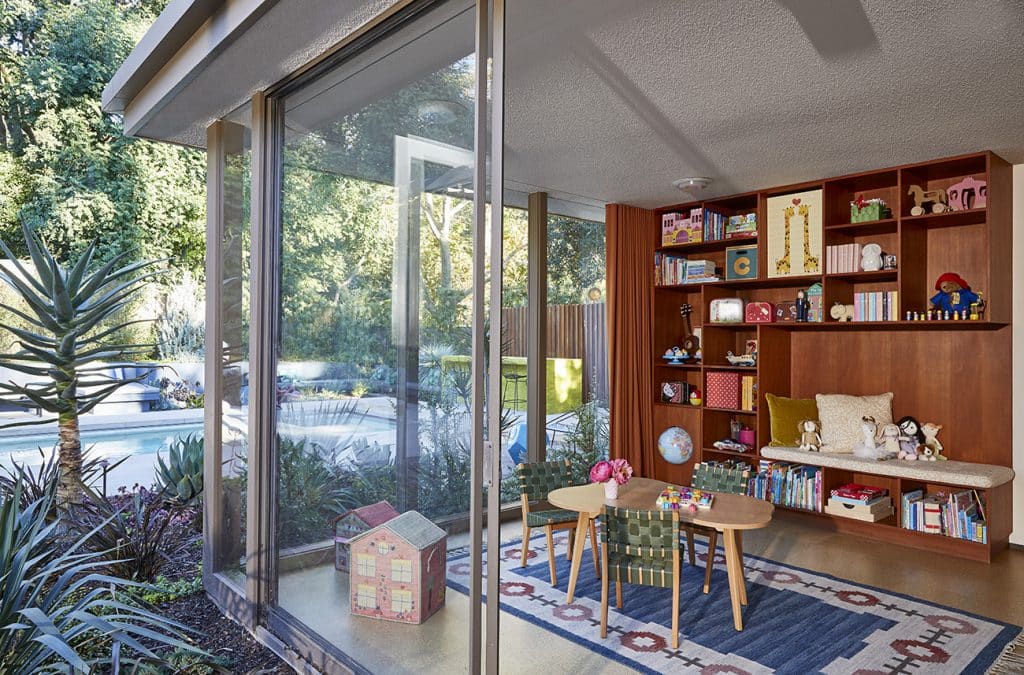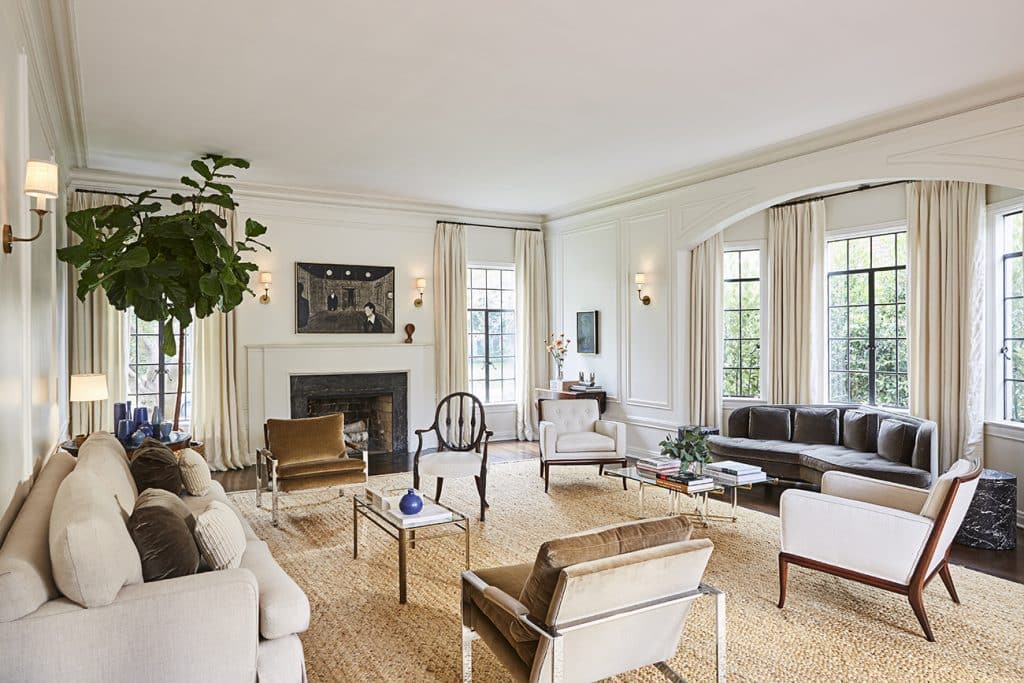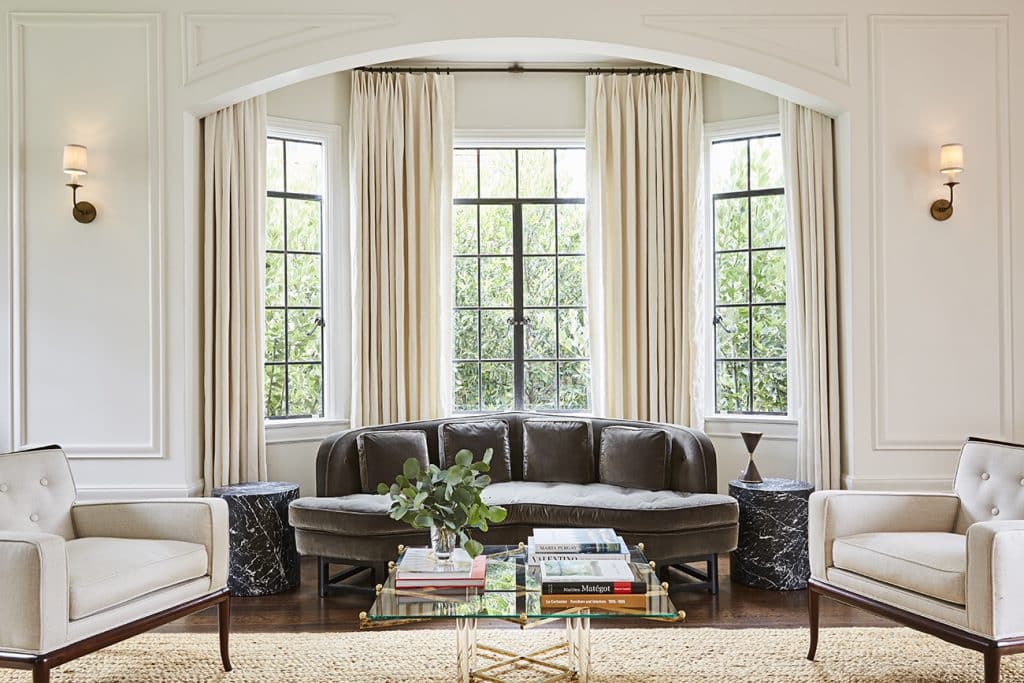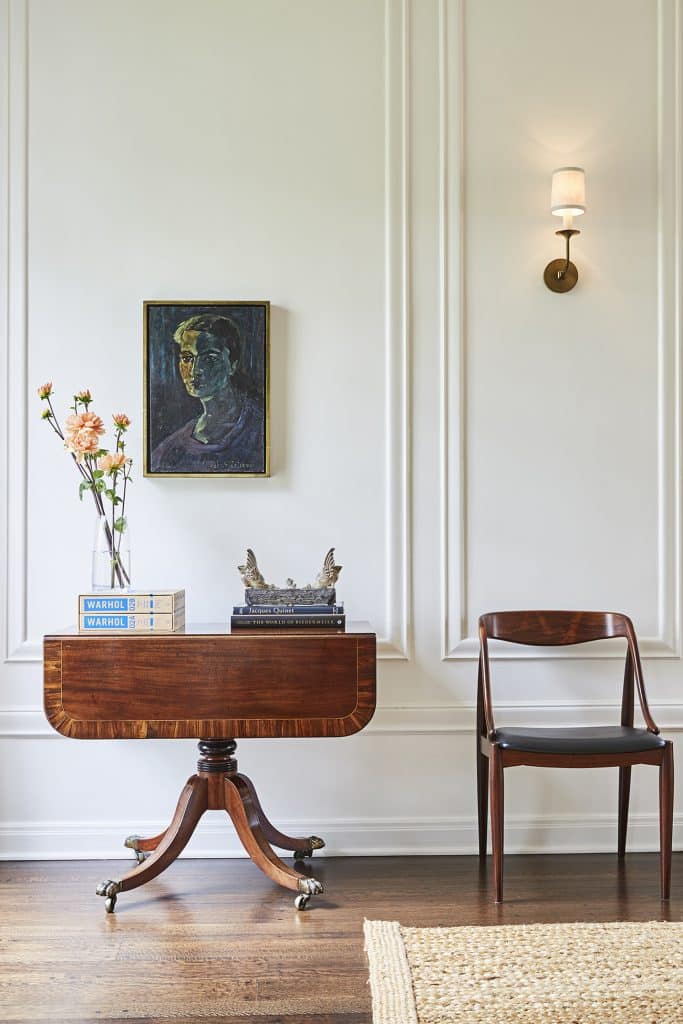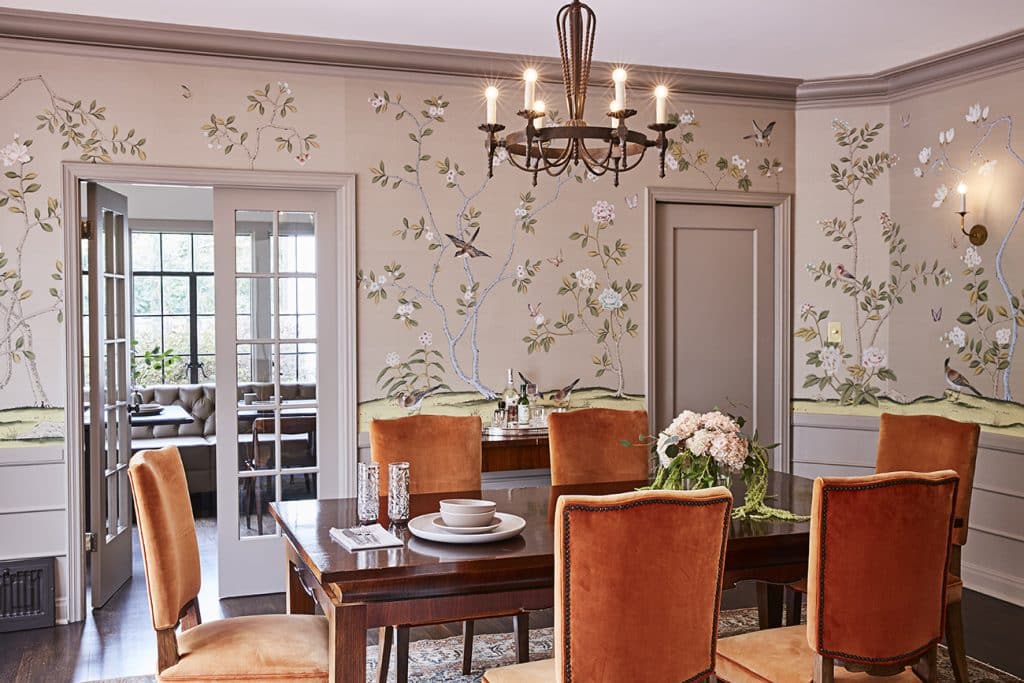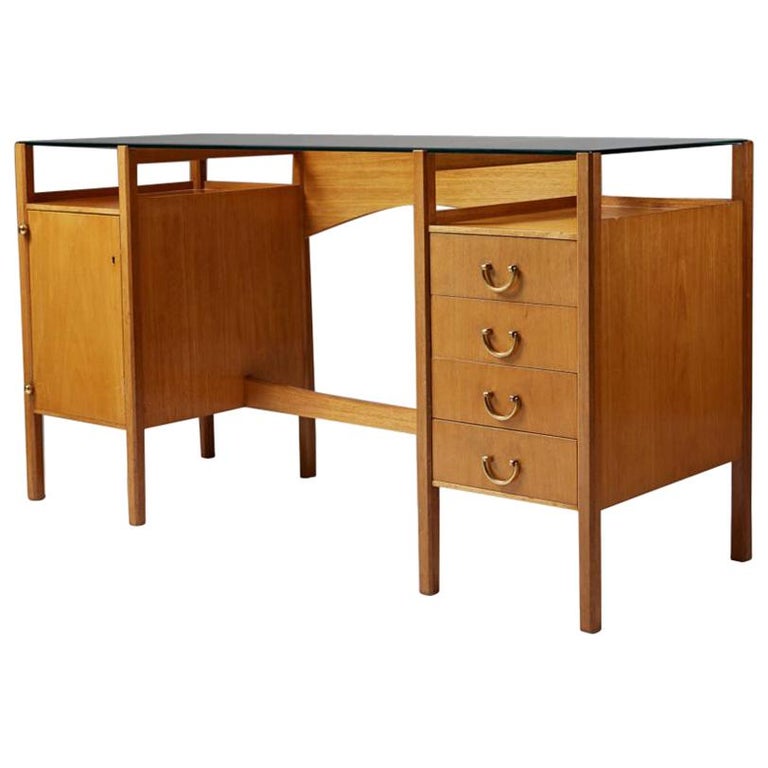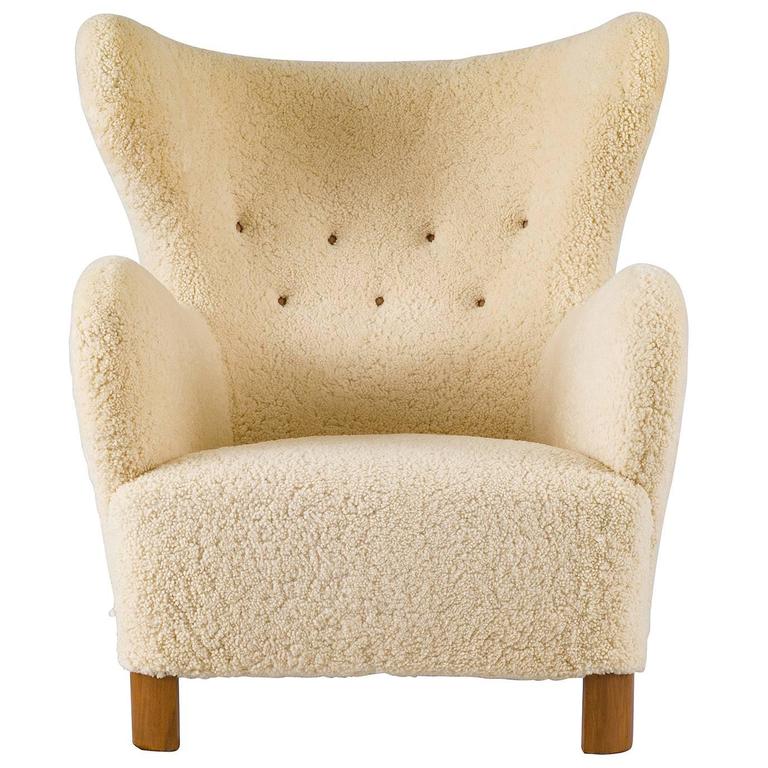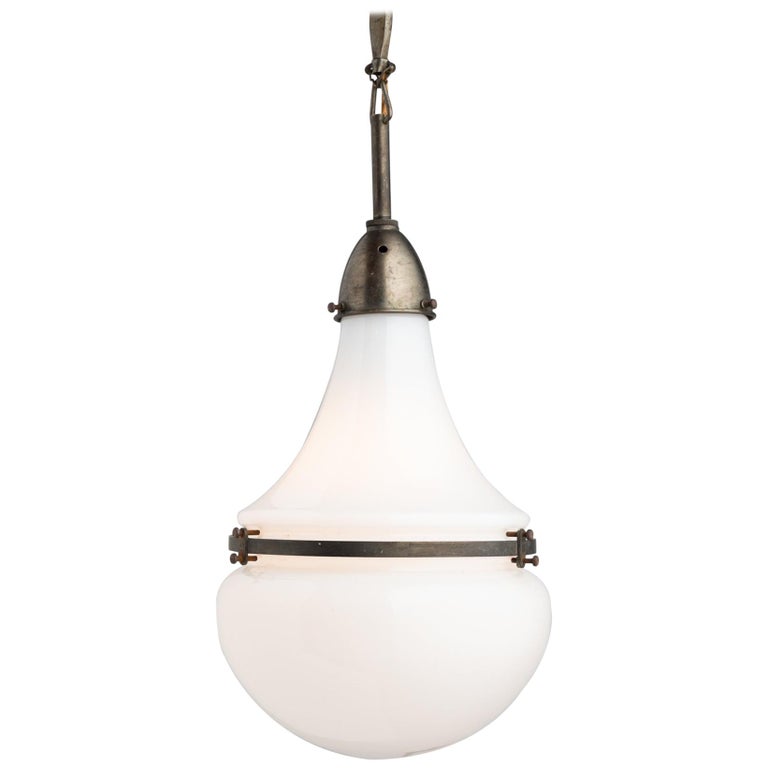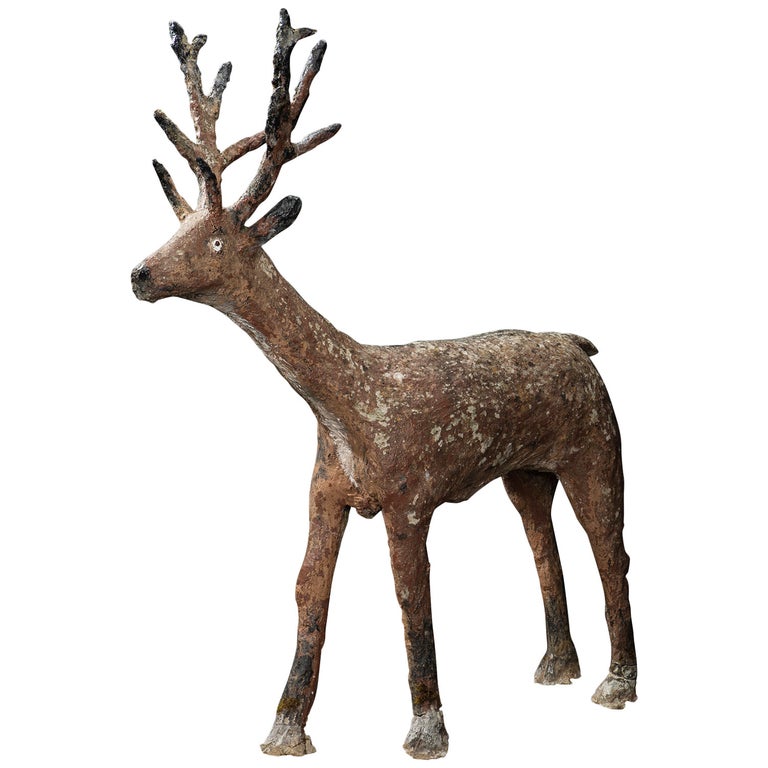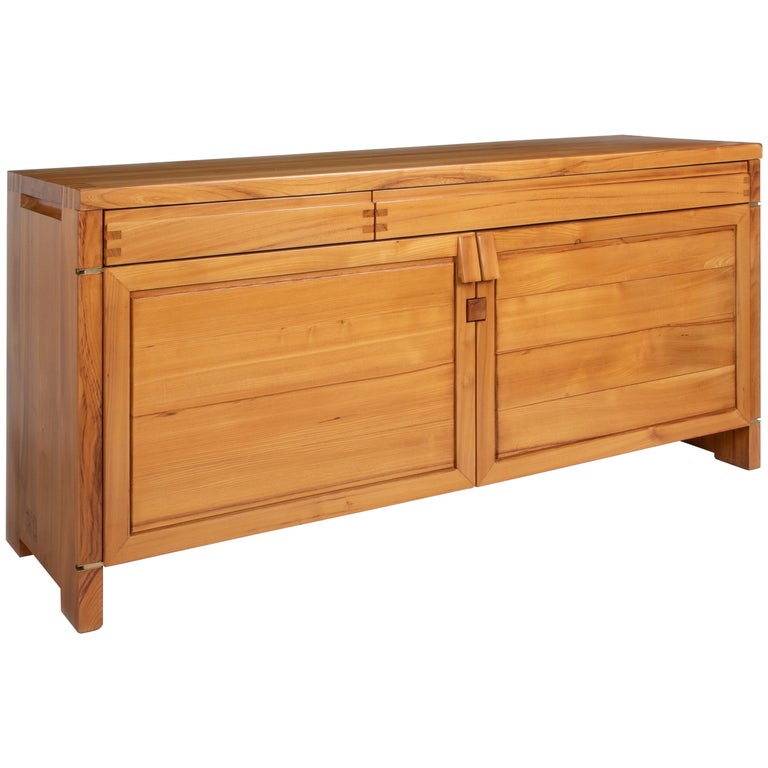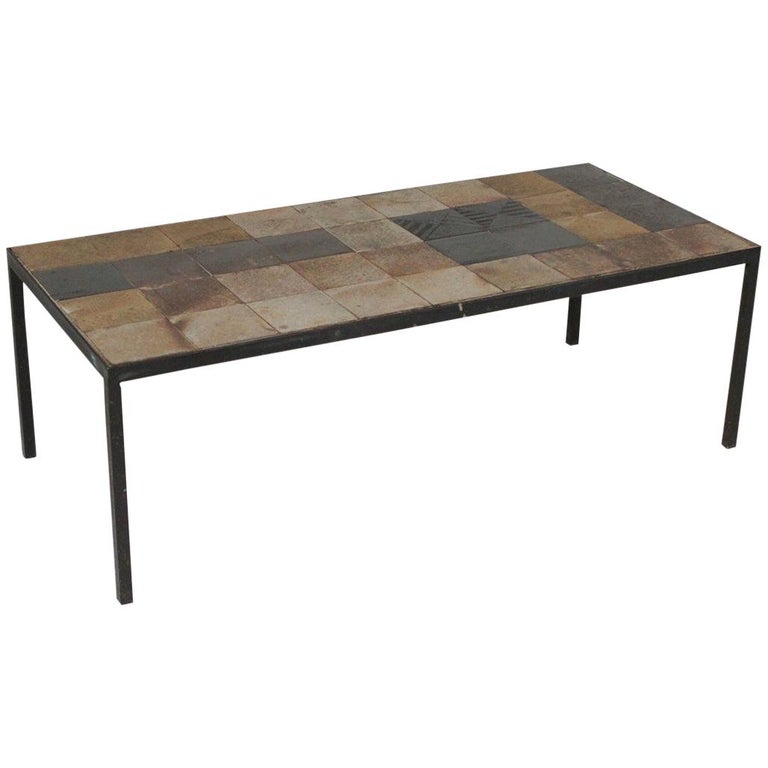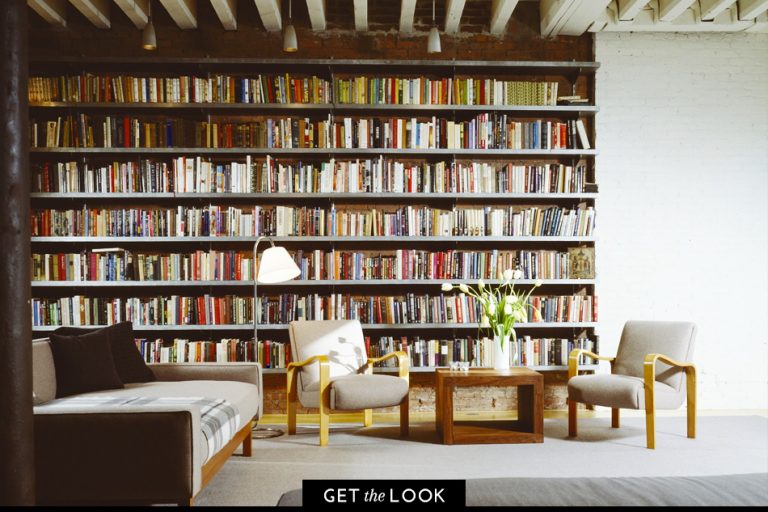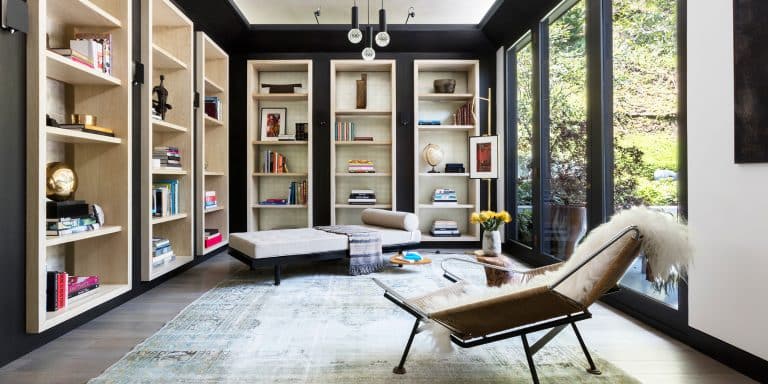May 10, 2020For people who love residential architecture, there may be no more satisfying neighborhood than Hancock Park, a rectangle west of Downtown Los Angeles developed in the 1920s. Its 1,200 houses are set far back from the tree-lined streets, with side driveways making room for symmetrical facades behind spacious front lawns or gardens. The range of styles is extraordinary — you might catch Tudor, French Provincial, Spanish Revival, Craftsman, Victorian and Colonial on the same block. Yet there’s nothing kitschy about Hancock Park; the houses aren’t stage sets but earnest explorations of historic styles. And they’re as carefully detailed inside as out.
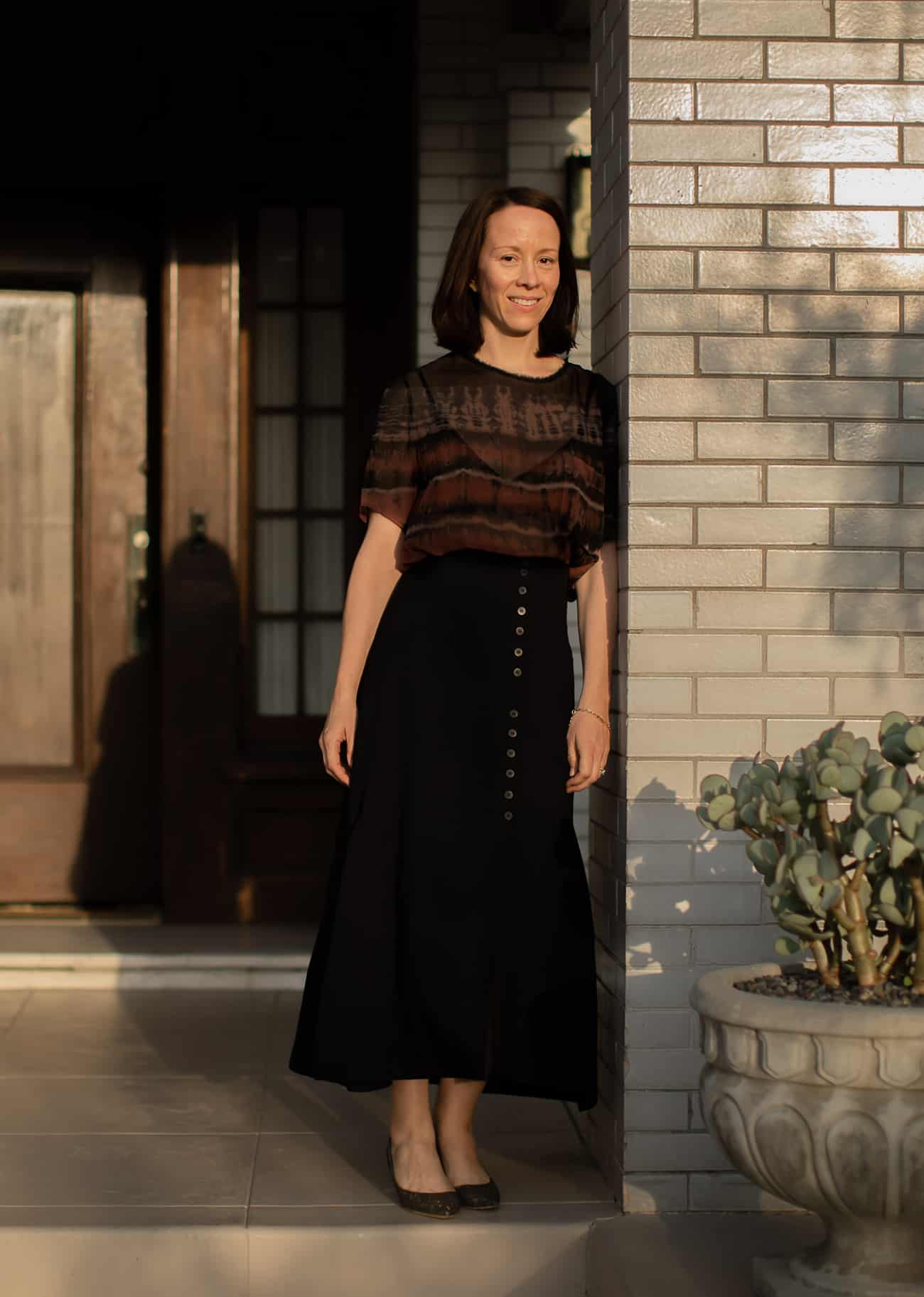
Sarah Shetter, a young interior designer, lives and works in Hancock Park. Before the coronavirus hit, she commented that if she could spend all day, every day in the idyllic neighborhood, she would. This spring, she got her wish — though not in a way anyone would have hoped for. Often, over the past few months, she has walked the few blocks from her home to her small second-floor office, where she works alone for a few hours, teleconferencing with employees, before returning to her husband and two daughters. Along the way, she passes several houses she is working on, for clients who want to make them as gracious and as livable as possible without doing anything rash. She has never decorated a ground-up house in Hancock Park, or even a gut renovation, and she wouldn’t want to, since that would mean sacrificing authentic charm. True, her portfolio includes a new house in Malibu and gut remodels in Ventura and Bel Air, but in Hancock Park, she defers to the existing architecture.
Raised in Arizona, Shetter received a master’s degree in interior architecture from Brooklyn’s Pratt Institute. While still in New York City, she worked in the studio of blue-paint-chip decorator Jeffrey Bilhuber, then moved to L.A., in 2004, where she opened an office with a partner. She went out on her own in 2013. Today, she considers herself lucky “to work on houses that I really care about” and, she says, because the houses attract a certain kind of buyer, “for people I care about as well.”
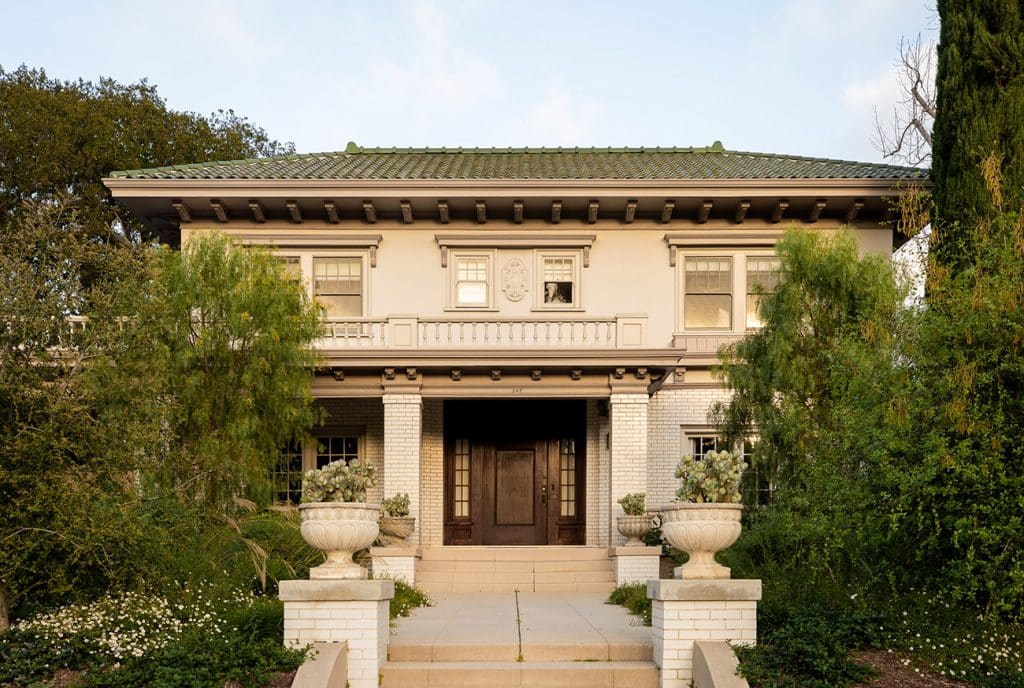
Take the 1922 Mediterranean Revival–style home, a few blocks from her office, that she decorated for a young couple and their daughter. The house looks very grand from the outside, but inside the proportions are suited to living, not showing off. “All the rooms feel cozy and inviting, and you want to be in them,” Shetter says. The previous owner’s decor, however, felt cookie-cutter. Alongside the kitchen was a kind of family room with a sectional sofa and a big television. Shetter worked with her clients to refashion it as a room for family meals, centered on a 13-foot-long oak table, custom made with reclaimed wood by Petersen Antiques, and vintage ladder-back chairs. The space is devoid of electronics; the goal is to get people to spend time conversing. “My starting point is always how clients want to use a room,” she says.
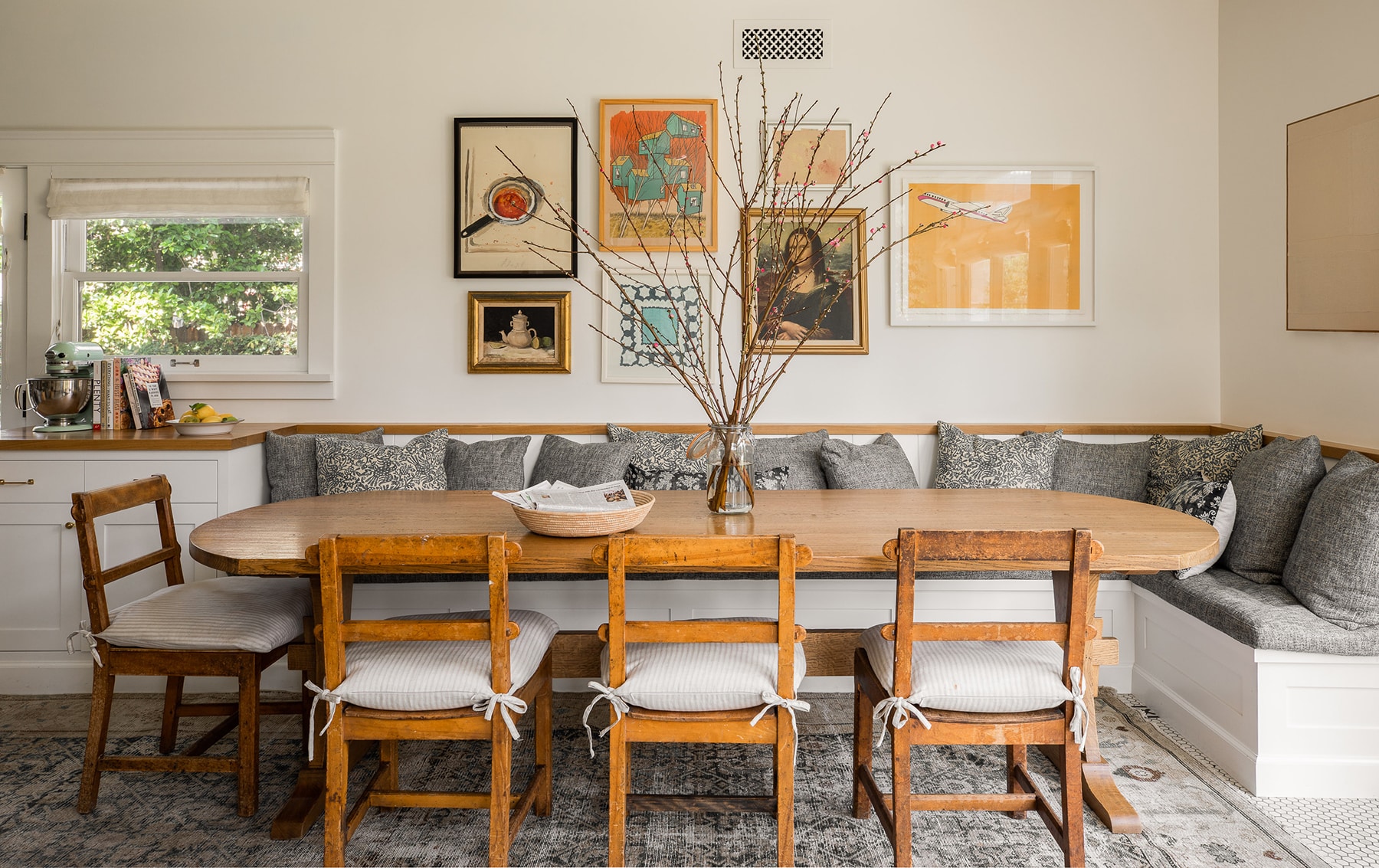
Even the “formal” dining room isn’t especially formal. Shetter surrounded the table with a group of 1920s French iron-and-wood chairs with their original red leather upholstery. Behind the table is, unexpectedly, a 1960s Danish credenza, which insures that the room doesn’t look like a period diorama. The wallpaper was handprinted by veteran British artisan Marthe Armitage.
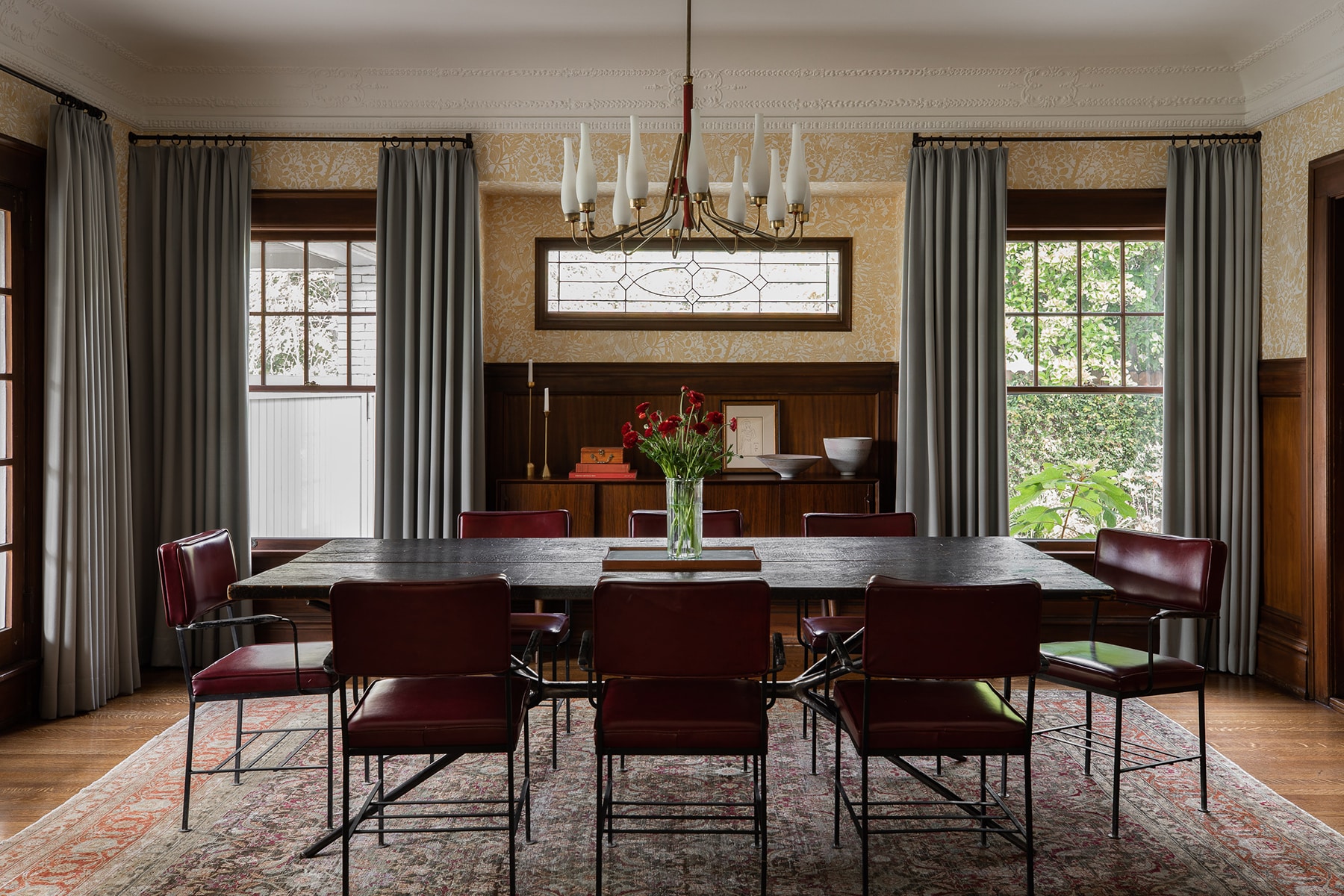
The living room features a piano that the husband plays regularly. “We really wanted the space to be used,” Shetter says, “not one of those forgotten living rooms.” Matching 1930s Fritz Hansen chairs, covered in sheepskin, face a Brenda Antin sofa across a 1930s coffee table. The sofa is done in a Kerry Joyce velvet that shows wear. “You can see where people have sat in it,” says Shetter. “We like that.”
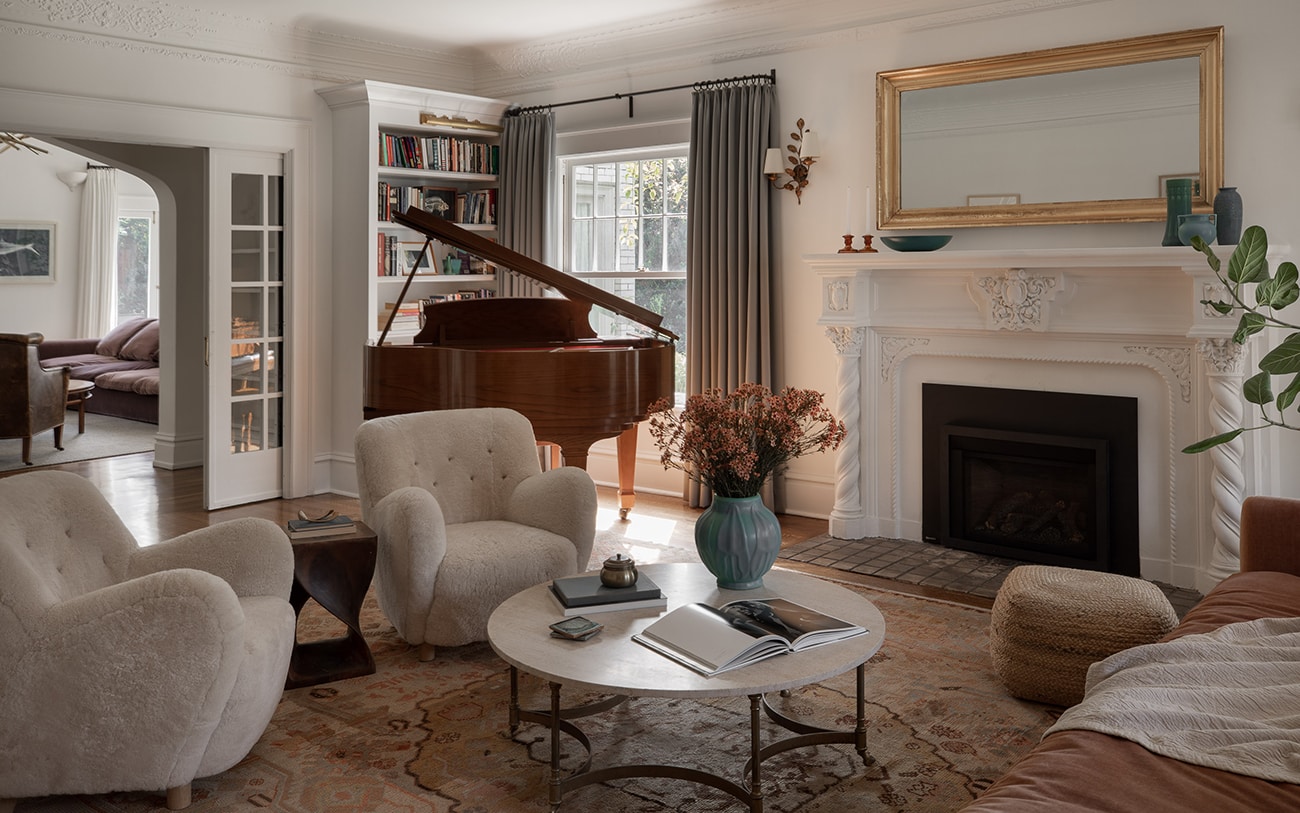
Halfway up the stairs is a landing with a window seat where, Shetter says, “you can pause, sit down and read or look out at the trees.”
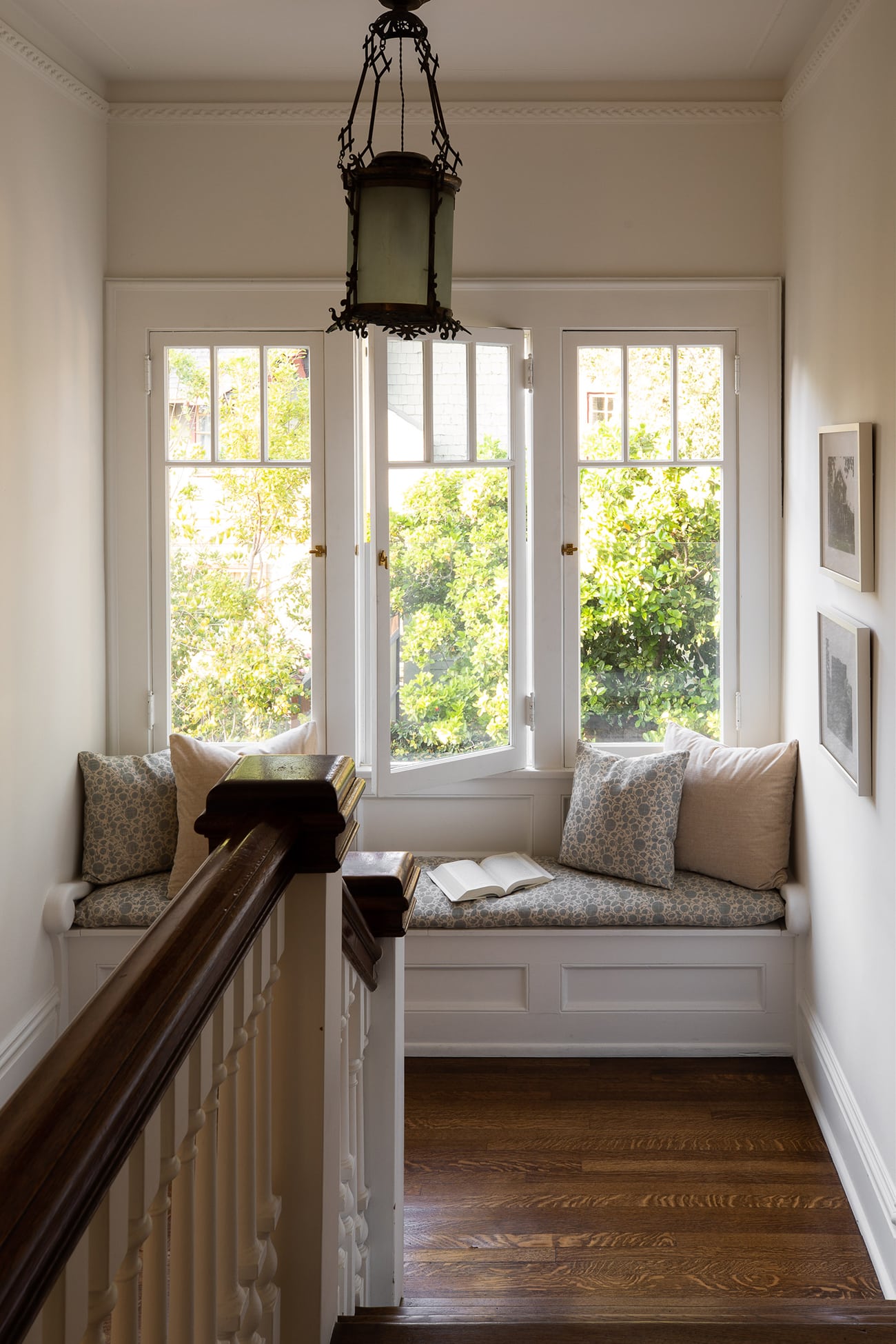
One of the upstairs bathrooms came with storage in the form of built-in dressers flanking the pedestal sink. The wood was rotting, so Shetter had the dressers re-created. “We wanted the space to look the way it did when it was new,” she says. Walls and floors are covered in appropriately named Revival tiles. As she did throughout the house, Shetter replaced the ordinary light switches with vintage-style brass toggles that gain patina every time they’re used.
A few miles north of Hancock Park, Shetter showed what she can do with a very different kind of house. In Beverly Hills, she and architect John Bertram, a frequent collaborator, redid a mid-century modern masterpiece by Robert Skinner. The two-and-a-half-year project began with extensive research into the materials and systems of the 1962 original, which is traversed by a long glass hallway that looks into a courtyard (redesigned by Judy Kameon, of Elysian Landscapes). Although the house is glamorous, Shetter says, “it’s also modest, which we like. It’s a real family house, with a breakfast nook and a Dutch door and a play area outside for the owners’ two daughters.”
Shetter worked with Bertram, who took the house down to the studs, to choose materials and finishes. “We didn’t use classic mid-century colors,” she says. “Instead, we used deep greens and blues and oranges, which makes the house feel elegant.” The two living room sofas, from Lawson Fenning, are covered in a blue-green velvet from Maharam. In the dining room, Alexander Calder prints overlook a vintage dining table and chairs by Niels Otto Møller.
As is usual in Shetter houses, there isn’t a single recessed light; she wanted the ceilings to remain unperforated. Instead, she chose an Alvar Aalto fixture for the breakfast nook and multi-bulb “mega fixtures” from rewire for the living room. In the TV room and the girls’ playroom, Shetter dressed the floors in vintage Swedish rugs that take the house beyond California modernist clichés.
Back in her beloved Hancock Park, Shetter recently helped reimagine another 1920s Mediterranean-style house for a client who, she says, “could be an interior designer himself.” (He and his husband, who share the house with their three daughters, are in the entertainment business.) “The house had spectacular iron casement windows and doors and gorgeous moldings, which together bring the architecture inside and which Shetter retained. The living room is done in whites and grays and caramels. One highlight is the window bay’s vintage Billy Haines sofa, upholstered in another Kerry Joyce velvet. Shetter didn’t look for furniture that matched; in fact, the only thing the two coffee tables have in common is that they were both bought on 1stdibs. With a collection of vintage sconces and table lamps, the room glows invitingly after dark. Here, the formal dining room is pretty formal, with de Gournay wallpaper and a table and high-back chairs that belonged to the client. The wainscoted den is also a bit intimidating.
But the family spends a lot more time in the breakfast room, where Shetter designed a tufted banquette of fake leather (“It can take a lot of wear-and-tear”) and tables of granite (unlike marble, she says, “it’s indestructible”). The house, for all its improvements, retains its Hancock Park levels of charm and authenticity. “If we do our job right, it’s better than it was,” Shetter says, “but no one will even know we were here.”
